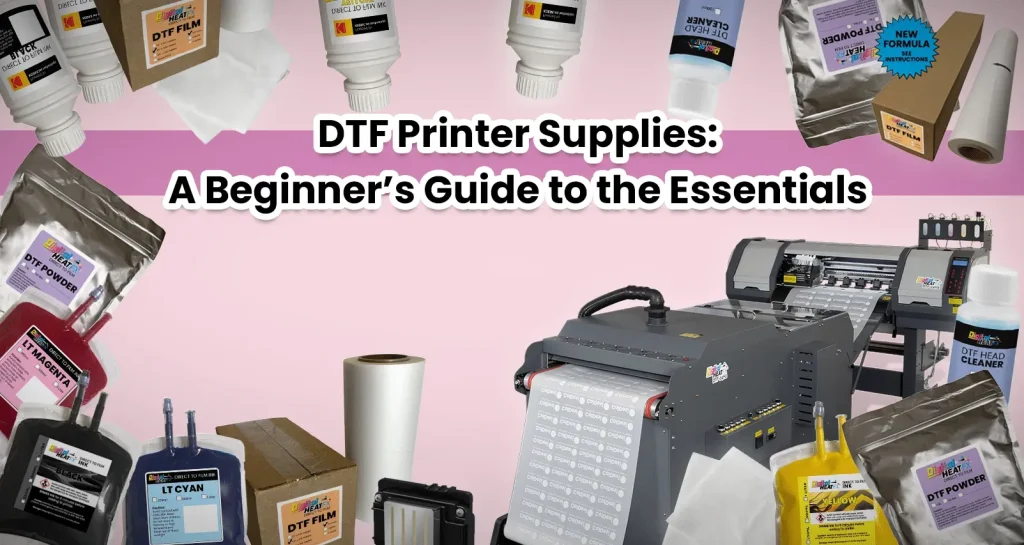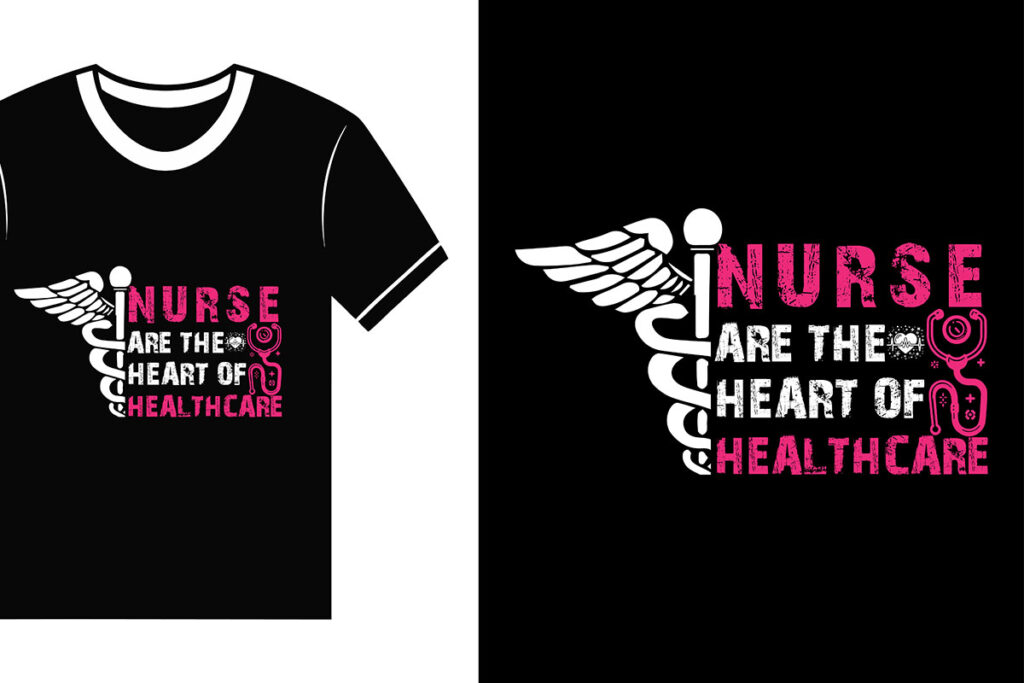DTF supplies play a pivotal role in the world of modern printing, particularly with the rise of Direct-to-Film (DTF) printing technology. This innovative approach allows for vibrant and durable prints on various fabric types, making it a favorite among designers and small businesses alike. By leveraging quality DTF printers, specialized DTF inks, and reliable DTF transfer films, users can ensure successful DTF printing that consistently delivers outstanding results. Understanding the significance of these components is essential for anyone looking to elevate their printing game. As we delve deeper into DTF supplies, you’ll discover how to harness their potential for extraordinary creative outcomes.
When it comes to supplies for the DTF printing process, various terms come into play, including DTF materials or DTF components. This modern printing technique utilizes specific film mediums and inks designed for high performance, ensuring that intricate designs are transferred effectively onto fabrics. The choice of quality machines, such as DTF-compatible printers, combined with appropriately formulated inks and films, is crucial for achieving the richness and durability demanded in today’s market. Embracing these elements not only enhances the overall quality of printed items but also empowers craftsmen, artists, and entrepreneurs to produce engaging, high-standard products.
What Makes Quality DTF Printers Essential?
Quality DTF printers are the cornerstone of successful printing operations, especially in the world of Direct-to-Film technology. These printers, designed with cutting-edge features, ensure consistent ink delivery and high-resolution output necessary for producing intricate designs. When investing in a DTF printer, consider renowned brands such as Epson and Roland, known for their reliability and performance in DTF applications. A printer that operates at high speed while maintaining accuracy can significantly enhance production efficiency, allowing you to cater to more customers while ensuring quality is never compromised.
In addition to brand reputation, key features such as ink compatibility and operational versatility should be prioritized when selecting a DTF printer. Opt for models that support various DTF inks and transfer films to expand your printing capabilities. This level of flexibility not only allows for innovation in design but also assists in meeting diverse customer demands, providing a competitive edge in the ever-evolving printing market.
Understanding the Role of DTF Inks in Printing Quality
DTF inks play a critical role in the overall success of the Direct-to-Film printing process. These specialized inks are formulated to ensure high pigmentation and vibrant color output, which is essential for capturing intricate details in designs. When choosing DTF inks, it’s vital to select those that are compatible with your printer to maximize performance and maintain consistency in color vibrancy. High-quality DTF inks not only enhance aesthetic appeal but also contribute to the durability of the prints, ensuring they withstand various washing and wearing conditions.
Moreover, advancements in DTF inks have led to the development of eco-friendly options, catering to the growing demand for sustainable printing practices. Using environmentally safe DTF inks not only aligns your business with modern ecological standards but also attracts a conscientious customer base that values responsibly sourced products. By prioritizing the selection of quality DTF inks, you enhance both the visual appeal and ethical standing of your printing efforts.
The Importance of High-Quality DTF Transfer Films
Selecting the right DTF transfer films is as crucial as the printing supplies themselves. High-quality DTF transfer films are designed specifically to facilitate smooth and efficient transfers, ensuring that inks adhere properly to fabrics. These films often feature specialized coatings that enhance adhesion, prevent ink bleeding, and provide exceptional clarity in prints. Investing in premium films can dramatically improve the sharpness and durability of your final products, making them more appealing to end-users who expect longevity and high fidelity in their apparel.
Additionally, the compatibility of transfer films with various fabrics enhances your ability to offer diverse products. Opt for films that withstand high-temperature transfers while ensuring effective release during the peeling process. As a result, businesses can expand their offerings to include a range of garments and substrates, thus increasing their market reach. In summary, high-quality DTF transfer films not only contribute to superior print quality but also enable greater product versatility.
Best Practices for Effective DTF Printing
Implementing best practices in DTF printing is crucial to achieving consistently high-quality results. One essential practice is the pre-treatment of fabrics, which prepares the material for optimal ink adhesion. This process often involves applying a pre-treatment solution that enhances the bond between the ink and the fabric fibers, improving the longevity and durability of the printed designs. In addition, taking time to understand the specific needs of different fabrics can lead to better overall outcomes and minimize the risk of issues such as peeling or cracking after washing.
Adjusting temperature and pressure settings during the heat transfer process is another critical factor in mastering DTF printing. Each material may require specific settings to ensure that prints adhere correctly and maintain their quality over time. Experimenting with these factors will help identify the perfect balance that enhances the permanence of your designs and reduces the likelihood of production flaws.
The Latest Innovations in DTF Supplies
The DTF printing industry is constantly evolving, with manufacturers introducing innovations aimed at improving quality and sustainability. Recent developments include the production of eco-friendly inks and more efficient printing technologies that not only reduce waste but also enhance print durability. Staying updated on these advancements is essential for businesses looking to maintain a competitive edge and meet customer demands for environmentally sustainable products.
Moreover, as technology progresses, suppliers are continuously refining their DTF supplies to offer cost-effective solutions without compromising quality. These improvements allow both small businesses and large-scale operations to optimize their production processes while ensuring they deliver outstanding results. By incorporating the latest innovations in DTF supplies, you position your brand as a forward-thinking player in the competitive printing market.
Educational Resources for DTF Printing Success
For those venturing into DTF printing, a wealth of educational resources is available to help navigate the intricacies of this technology. Online platforms like Printful provide comprehensive tutorials and guides that cover everything from the basics of DTF printing to more advanced techniques and best practices. Engaging with these resources can significantly elevate your understanding and application of DTF printing, setting the stage for successful operations.
Additionally, joining industry forums and communities can offer invaluable support and networking opportunities. These platforms allow you to connect with other DTF printing enthusiasts and professionals, exchanging tips, tricks, and experiences that can enhance your skill set. By leveraging these educational resources, you can stay informed about the latest trends and innovations in DTF printing, empowering your business to thrive in a competitive landscape.
Frequently Asked Questions
What are essential DTF supplies needed for high-quality printing?
To achieve successful DTF printing, essential DTF supplies include quality DTF printers, specialized DTF inks, high-quality DTF transfer films, and adhesive powders. These components ensure vibrant colors, excellent adhesion, and durability in your printed designs.
How do I choose the best DTF printer for my needs?
When selecting a DTF printer, look for quality brands known for performance, such as Epson or Roland. Key features to consider include print resolution, speed, compatibility with DTF inks and transfer films, and the ability to handle a variety of materials effectively.
What types of DTF inks should I use for optimal results?
For the best results in DTF printing, use specialized DTF inks that are designed to work with transfer films and have high pigmentation levels. Ensure the inks are compatible with your DTF printer and suitable for the fabrics you plan to print on.
Why are DTF transfer films important in the printing process?
DTF transfer films are crucial as they provide a surface for prints before transferring designs to fabric. High-quality DTF transfer films offer excellent adhesion, sharp prints, and durability, contributing significantly to the success of your DTF printing projects.
What role does adhesive powder play in successful DTF printing?
Adhesive powder acts as a binding agent that ensures the ink adheres properly to the fabric during the transfer process. Utilizing the right adhesive powder enhances the print’s longevity and wash resistance, essential for high-quality DTF printing results.
What are some best practices for achieving successful DTF printing?
Best practices for successful DTF printing include pre-treating fabrics for better ink adhesion, adjusting temperature and pressure settings on your heat press for optimal transfer, and following proper curing techniques after printing to enhance the durability and quality of your designs.
| Key Components | Description |
|---|---|
| Quality DTF Printers | Reliable printers, like Epson and Roland, ensure consistent ink transfer for vibrant designs. |
| DTF Inks | Specialized inks with high pigmentation for vibrant colors and durability are essential. |
| Transfer Films | High-quality films designed for high temperatures improve adhesion and print sharpness. |
| Adhesives and Powders | Robust adhesive powders enhance print longevity and wash resistance during transfers. |
| Best Practices | Includes fabric pre-treatment, adjusting press settings, and post-processing curing techniques. |
Summary
DTF supplies play a crucial role in achieving successful and high-quality printing outcomes. By investing in the right equipment, such as quality printers, special inks, and durable transfer films, along with employing best practices for printing, you can unlock the full potential of DTF printing. This technique not only enhances the vibrancy and detail of designs but also ensures they remain resilient over time. As you explore DTF printing, stay updated on the latest innovations and practices to ensure your projects stand out in the competitive market.



